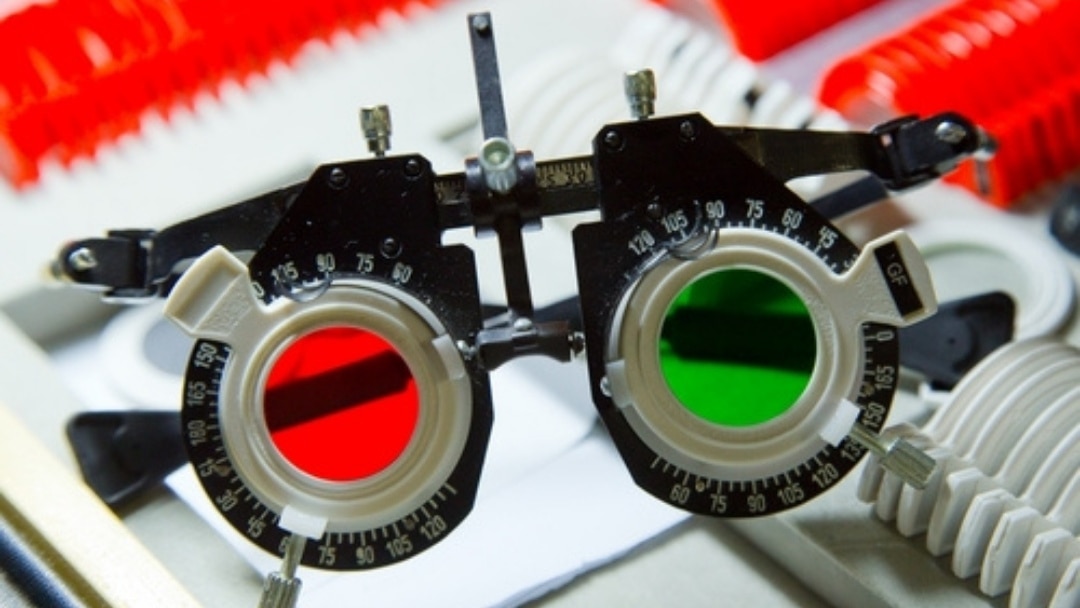Developmental optometrists, also known as behavioral optometrists (OD), can correct the following visual dysfunctions with therapeutic lenses and prisms:
- Climbing to great heights without a sense of awareness and danger
- Feeling overwhelmed and bombarded when entering a crowded room
- Banging into doors frames or slamming into people
- Odd gait
- Poor eye contact
- Poor peripheral vision
- Toe walking
- Odd neck and body postures
These are all visual abnormalities that many children with neurodevelopmental disorders such as autism, ADHD and Sensory Processing Disorder experience because of how they perceive their environment.
Different Types of Lenses and Prisms
Developmental optometrists use a number of different lenses and prisms such as microprisms, yoked, bifocal, colored lens and/or filters depending on the condition.
Some ODs prescribe “learning lenses” or “training lenses” to give the child a totally new perspective.
What is amazing about lenses and prisms is that they can dramatically affect a child’s visual perception in a relatively quick time frame.
They have the power to make objects appear larger or smaller, move up and down, left and right, in and out, alter color and contrast – even reduce sensory input!
Consequently, the child learns very quickly to adapt and/or respond in a different way to new visual input.
Yoked Prisms
Yoked prisms are designed to alter neural organization so communication between the visual, auditory, vestibular and proprioceptive sensory systems improves rather rapidly.
According to Melvin Kaplan OD, children with neurodevelopmental disorders develop certain strategies such as eye turns, postural warps and self-stimulatory behaviors to compensate for their underlying visual deficits.
Over time these behaviors become extremely well-ingrained.
Dr. Kaplan’s experience is that yoked prisms alter perceptions for these children that are so dramatic and instantaneous that the child no longer is required to maintain their maladaptive behaviors because they are longer relevant or necessary.
It is very interesting to note that “autistic behaviors” can dramatically change when treated therapeutically for visual dysfunction.
The problem is identifying these behaviors as a visual problem in the first place!
Colored Lenses
Colored lenses are used to treat jaundiced babies or people with Seasonal Affective Disorder (SAD).
ODs also use colored lens to treat a variety of conditions such as strabismus, amblyopia, focusing and convergence problems, learning disorders and the effects of stress and trauma.
This method is called “syntonics” and is known as optometric phototherapy.
Currently, this therapy is showing great promise in treating brain injuries, emotional disorders and autism spectrum disorders.
Below are some of the improvements made in children from using lens and prisms:
- Posture
- Visual awareness
- Depth perception
- Spatial localization
- Increase or decrease in sensory-seeking behaviors
- Gait
- Organization
- Eye contact
- Mood and facial expressions
- Fine motor skills (writing)
- Self-stimulatory behaviors
- Walking with confidence
Still Looking for Answers?
Visit the Epidemic Answers Practitioner Directory to find a practitioner near you.
Join us inside our online membership community for parents, Healing Together, where you’ll find even more healing resources, expert guidance, and a community to support you every step of your child’s healing journey.
Sources & References
No sources & references currently available.
Resources
Related Pages
Choosing a Developmental Optometrist
Parents Active For Vision Education: Visual Skills for Autism and Other Developmental Delays
Prioritizing Interventions for Autism, PDD-NOS, SPD and ADHD
Vision Therapy for Autism, ADHD, SPD and Learning Disabilities
Vision Therapy for Neurodevelopmental Disorders
Vision Therapy from a Developmental Optometrist
